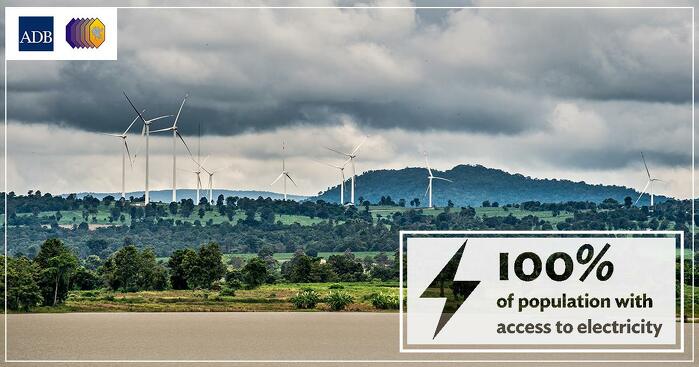Preparing the GMS Power Interconnection Project, Phase I
Details
Funding
Project Description
At the seventh meeting of the Experts Group on Power Interconnection and Trade (EGP) in May 2002, the countries of the Greater Mekong Subregion (GMS) endorsed the findings and recommendations of the study for the regional indicative master plan on power interconnection and requested the Asian Development Bank (ADB) for project preparatory technical assistance (TA) to prepare a feasibility study for the identified power transmission interconnection between the Lao People-s Democratic Republic (Lao PDR) and Viet Nam. Following a three-country consultation meeting during 16-17 June 2003 in Manila at ADB headquarters, an ADB Fact-Finding Mission visited Lao PDR, Thailand, and Viet Nam in July/August 2003 and reached an understanding with each government on the goals, purpose, scope, outline terms of reference, and implementation arrangements for the TA. The master plan study recommended an indicative plan on power interconnections in the subregion, based on power demand forecast, generation and transmission system planning scenarios, and its economic evaluation. The recommendations include (i) a 230 kilovolt (kV) line between Phnom Penh in Cambodia and Chau Doc in Viet Nam in 2004 (ii) a 115 kV line between Thailand and western Cambodia in 2004; (iii) a 500 kV line between Roi Et in Thailand and Ha Tinh in Viet Nam via the Lao PDR in 2009; (iv) a 500 kV line between Savannakhet in the Lao PDR and Pleiku in Viet Nam in 2010; (v) a 230 kV line between Nam Mo in the Lao PDR and Ban Mai in Viet Nam in 2009; (vi) a 230 or 500 kV line between Na Bong in the Lao PDR and Udon Thai in Thailand in 2008; (vii) a 500 kV line between Tasang in Myanmar and Mae Moh in Thailand in 2012; (viii) a 500 kV line between Jinghong of Yunnan Province of the People-s Republic of China (PRC) and Tha Wung in Thailand in 2013; (ix) a 230 or 500 kV line between Malutang in Yunnan Province in the PRC and Soc Son in Viet Nam in 2019; and (x) a 230 kV line between Sambor in Cambodia and Tan Dinh in Viet Nam in 2019. The proposed transmission line between Roi Et and Ha Tinh would be the first power interconnection among the three countries in the GMS to link power networks of Thailand and Viet Nam.
Progress (as of March 2021)
Project closedContacts
| Contact 1 | |
| Contact Name | |
|---|---|
| Organization | |
| Contact 2 | |
| Contact Name | - |
| Organization | - |
| - | |


